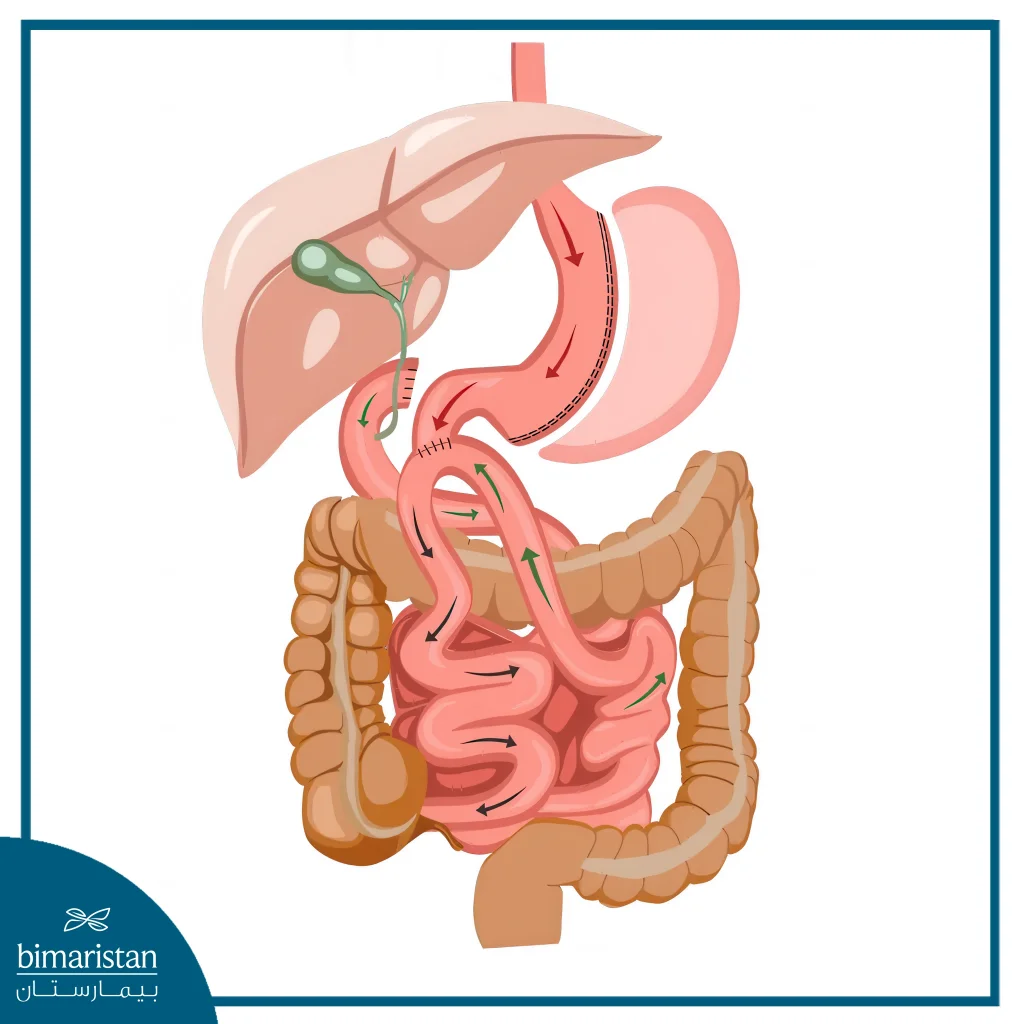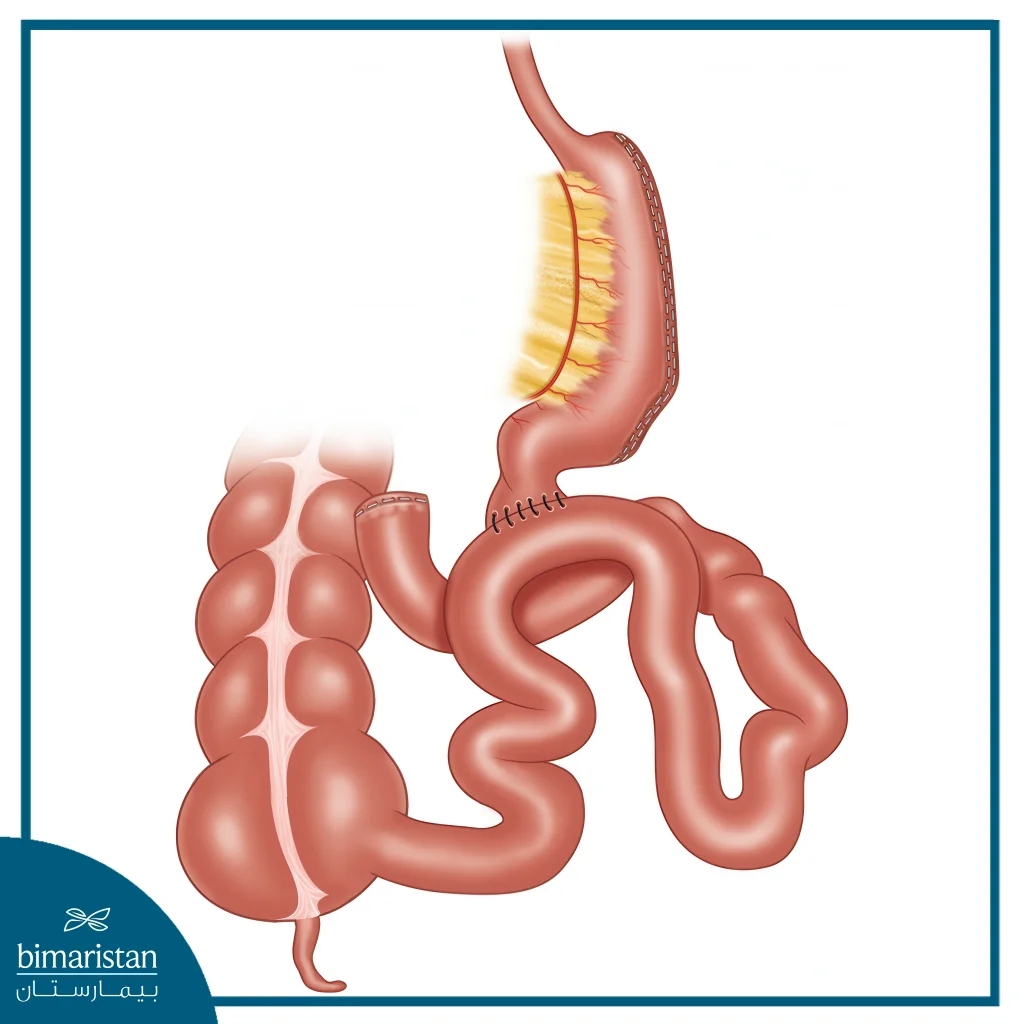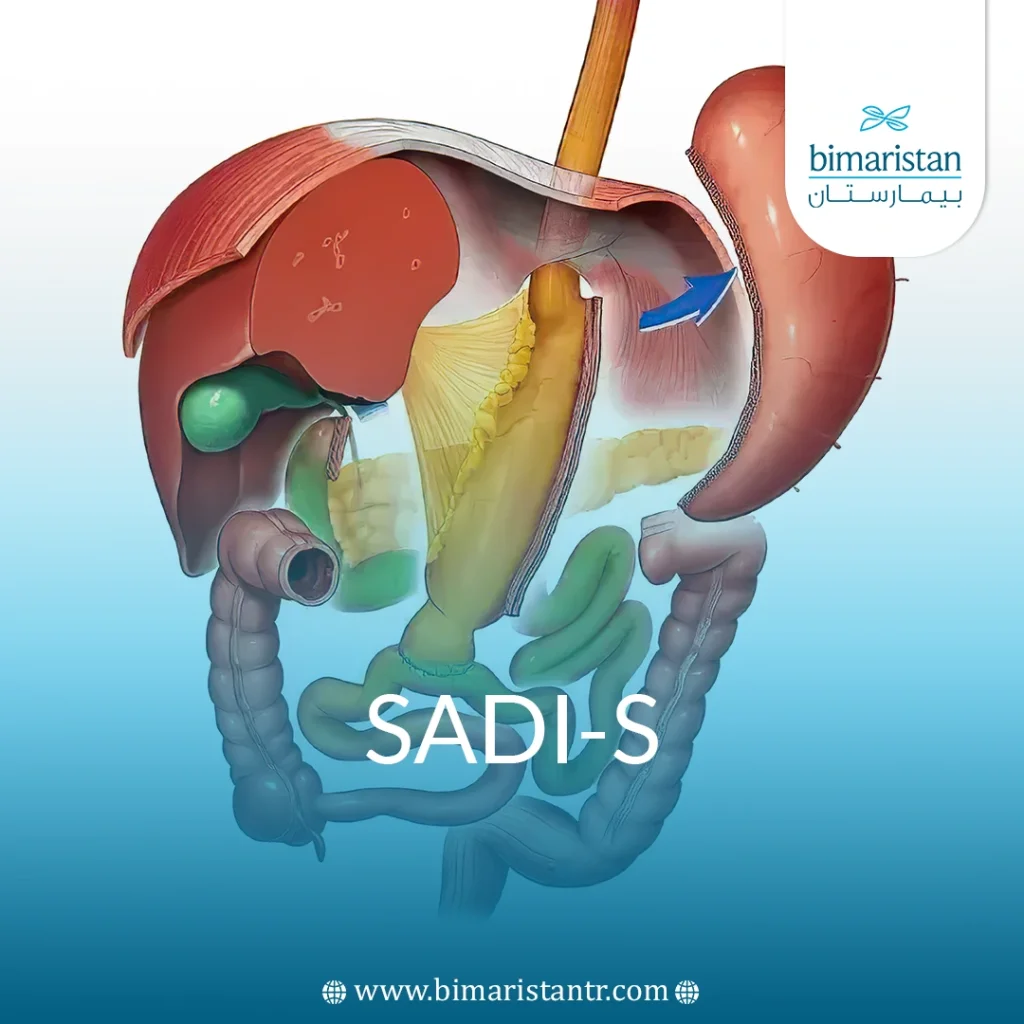Single Anastomosis Duodeno-Ileal Switch (SADI-S) is a modified version of the traditional duodenal switch operation, used to treat morbid obesity for over 30 years in Turkey. SADI-S combines the benefits of sleeve gastrectomy and gastric bypass.
In the procedure, sleeve gastrectomy removes 75% of the stomach, leading to reduced food intake and a decrease in ghrelin, the hormone that triggers hunger.

Gastric bypass involves dividing the upper part of the small intestine (duodenum) behind the exit of the stomach (pylorus) and connecting the lower part of the small intestine (ileum) to this upper part.
This results in food bypassing a portion of the small intestine resulting in reduced absorption of the fat, sugar, and calories eaten.
The amount of small intestine bypassed can vary depending on the desired weight loss.
Advantages of SADI-S
Studies show that the SADI-S procedure can provide greater weight loss than standard sleeve gastrectomy or gastric bypass.
Some of the other advantages of SADI-S include the following:
- Combines the advantages of sleeve and bypass
- Less risk of drowning and diarrhea than other bypasses
- Less risk of internal hernias
Disadvantages of SADI-S
- Increased risk of leakage because there are two main lines, one for the sleeve and one for the bypass.
- Longer process and anesthesia time.
SADI-S procedure steps
The SADI-S procedure is a three-step process:
- Create a sleeve gastrectomy.
- Cutting the upper part of the small intestine beyond the value of the gastric outlet.
- Connect a loop from the lower part of the small intestine to the upper end of the small intestine.
What is Laparoscopic SADI-S?
During the procedure, a large portion of the stomach is removed to minimize the person’s ability to eat and reduce the level of the hormone ghrelin (hunger hormone).
The upper part of the small intestine is divided so that food bypasses part of the small intestine.
This reduces the number of fat, sugar and calories absorbed by the body.
What are the benefits of undergoing the SADI-S procedure?
According to studies, the SADI-S procedure is able to provide greater weight loss than standard gastric sleeve surgery or gastric bypass surgery. Because the surgery combines the benefits of both gastric sleeve and gastric bypass surgeries, it is often a very effective treatment for those who are morbidly obese.
Surgery also has a lower risk of diarrhea compared to other forms of bypass, and there is a lower risk of internal hernia when compared to other surgical weight loss options.
What is the downside of choosing the SADI-S procedure for weight loss?
SADI-S tends to be a much longer process than other surgical weight loss options currently available.
As a result, the anesthesia time is longer than with other procedures.
There is also an increased risk of leakage with SADI-S.
This is because there are two baselines – one for sleeve and one for bypass.
What is duodenal switch surgery or SADI-S?
The duodenal ring switch (SADI-S or SIPS) is a modern, safe, and highly effective modification of the historic duodenal switch (DS) procedure, also known as biliary switch with duodenal switch (BPD-DS).
Like gastric bypass surgery, SADI-S (SIPS) is a restrictive and malabsorptive surgery. Restrictive means that the stomach decreases in size, limiting the amount of food you can eat.
Malabsorptive surgeries reduce the amount of nutrients your body absorbs, in this case, by reducing the size of the small intestine.
The combination of malabsorption and restriction makes duodenal switch surgery (single anastomosis with sleeve gastrectomy), like other bariatric surgeries, highly effective in enabling our patients to lose weight and keep it off.
According to a study by the National Institutes of Health, duodenal switch surgery (single anastomosis with sleeve gastrectomy) is the most effective bariatric surgery if you have a body mass index (BMI) above 50.
How is SADI-S procedure performed?
This surgery involves removing about 85% of your stomach by forming a sleeve gastrectomy at the top. This reduces the amount of food you can eat at one time.
In addition, right after the sleeve portion, the first part of the small intestine immediately after the stomach (called the duodenum) is divided and inserted into a loop from the small intestine up to the stomach to bypass about half of the small intestine.
This reduces the amount of calories that can be absorbed (as well as the amount of fat) more than bypass.
What are SADI-S and SIPS procedures?
SADI-S and SIPS are commonly used medical abbreviations that refer to the duodenal annular switch.
How does the current duodenal annular differ from the traditional DS?
The traditional procedure, called biliopancreatic diversion with duodenal switch (BPD-DS ) or gastric reduction duodenal switch (GR-DS) involves bypassing more than 80% of a person’s small intestine.
While this process resulted in significant weight loss, a subset of patients suffered from persistent vitamin or protein malnutrition despite taking supplements.
This was due to the removal of much of the small intestine, limiting the patient’s ability to absorb essential vitamins and proteins.

Today, it is possible to perform a looped version of this procedure (SADI-S or SIPS) that bypasses only half of the small intestine.
Leaving this much intestinal length for the absorption of key nutrients reduces the risk of vitamin or protein deficiencies while maximizing weight loss in a safe environment.
However, if you’re considering this process as a way to treat type 2 diabetes or maximize your chances of long-term weight loss, you must be very compliant in taking a certain set of vitamins and proteins daily for the rest of your body.
This is critical to help you get through the side effects.
With this commitment, the SADI-S (SIPS) process has been proven to be safe and highly effective with a healthy diet and vitamin supplements.
What should I expect from annular duodenal switch surgery?
The primary advantage of duodenal switch surgery (SADI-S or SIPS) is that it combines intake restriction (the sleeve portion of the surgery limits the amount of food you can eat) with significant calorie malabsorption (bowel rerouting reduces fat and calorie absorption).
This results in the highest percentage of unhealthy weight loss with the lowest risk of significant weight regain.
On average, patients can expect to lose 80-100% of their unhealthy weight over approximately 9 months.
Another important advantage of the duodenal buttonhole switch is that this process is very good at resolving obesity-related health issues such as high blood pressure, sleep apnea, and high cholesterol.
It has the highest success rate of any bariatric surgery in treating type 2 diabetes.
How is annular duodenal switch surgery performed?
The surgery takes about an hour and a half. This will vary based on your previous surgical history and anatomical structure.
The typical hospital stay is two nights.
This procedure is almost always performed laparoscopically through five small incisions in the abdomen.
Laparoscopic surgery usually results in a shorter hospital stay, faster recovery, smaller scars, and less pain than open procedures.
Duodenal switch complications
Although it is unlikely, it is possible for patients to experience minor complications after bariatric surgery. These complications are usually short-lived and can be easily fixed.
Complications include surgical pain, infections, and excess skin.
The most common duodenal switch complications are increased acid reflux, nutrient deficiencies, and loose or greasy stools.
Our specialist works hard to minimize these risks.
He or she will repair any hiatal hernia you may have in surgery and may prescribe antacids as needed.
You can minimize the risk of nutrient deficiencies by strictly adhering to a daily regimen of vitamin and mineral supplements.
You can reduce the risk of fatty stools by avoiding eating fatty foods.
Both activities will improve your health in the long run.
Post-surgical care
After surgery, you will spend two or three days in the hospital, and you will be given pain management medications to keep you comfortable.
For the first two weeks after surgery, you will remain on a liquid-based diet.
Your surgeon and dietitian will give you a specific diet plan and instructions to follow afterward.
Drinking plenty of fluids throughout the day is important to avoid dehydration.
Duodenal switch diet
After the duodenal switch, you will need to adhere to a healthy bariatric surgery diet in order to maximize weight loss and restore your health.
You’ll need to eat multiple small meals a day consisting of lean proteins, fruits, and vegetables; avoid carbohydrates and sugars.
To avoid malnutrition, you’ll also need to supplement your duodenal switch regimen with a daily diet of vitamins and minerals.
Is SADI-S surgery right for me?
You may be a good candidate for a duodenal annuloplasty (SADI-S or SIPS) if you:
- If you have a BMI > 50 or are interested in losing 80-100% of your excess weight
- You want the best chance of curing type 2 diabetes (up to 98%)
- You know you’ll be using vitamin and protein supplements for life.
You may not be an ideal candidate for ring DS surgery if you:
- Have a vitamin or mineral deficiency (including anemia)
- Have Crohn’s disease, a medical condition that requires prednisone or anti-inflammatory medications, or have had multiple previous abdominal surgeries
- Having IBS with frequent diarrhea as DS is expected to increase the softness and frequency of stools.
- You have severe reflux (the quantitative portion has been shown to increase reflux after surgery in up to 20% of patients).
Sources:

